Kangals – ever heard of them? If you have, it might have gotten into you that owning one can be dangerous or terrifying.
Also known as the Kangal Shepherd, Kurdish Kangal, or Turkish Kangal, this breed can certainly be intimidating, thanks to its massive, muscular body.
There’s more to these dogs than their appearance, though. Let’s find out more about this often misunderstood breed.
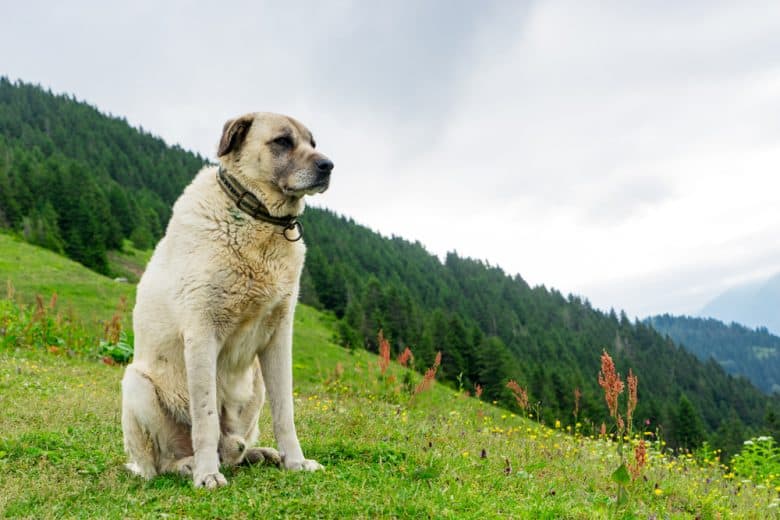
Quick Navigation
- 1 The Kangal at a Glance
- 2 Where Do Kangal Dogs Come From?
- 3 How Do I Spot a Kangal?
- 4 A tough and fearless breed
- 5 Are Kangal dogs really dangerous?
- 6 Debunking Myths about the Kangal Dog
- 7 What to Expect in Raising a Kangal
- 8 Are Kangals healthy dogs?
- 9 How to Train a Kangal Dog?
- 10 Getting Your First Kangal Puppy
- 11 The final word on this mighty breed
The Kangal at a Glance
We’ve put together a table below to give you a quick overview of the Kangal.
| Breed Summary | Kangal Quick Facts |
| Breed Purpose | Flock Guardian |
| Breed Size | Large-to-Giant |
| Height | Male: 29 inches (74 cm) Female: 27 inches (69 cm) |
| Weight | Male: 110 to 150 lbs (50 to 68 kg) Female: 80 to 120 lbs (36 to 54 kg) |
| Coat Type | Short, dense, double coat |
| Shedding | Moderate; Heavily twice per year |
| Most Popular Coat Colors | Pale tan |
| Lifespan | 11 to 13 years |
| Temperament | Independent, Calm, Protective |
| Energy | Moderate |
| Exercise Needs | 1 to 2 hrs per day |
| Average Price | $800 to $5,000 |
Where Do Kangal Dogs Come From?
These mighty canines originated from the town of Kangal, located in the Turkish province of Sivas. Though they were the prized breed of the landholders and chieftains of the area, they were mostly bred by villagers who needed guardians for their flocks of sheep and goats.
With their size, these dogs could definitely scare away wolves and other wild animals. And, even today, they pretty much have the same appearance, disposition, and behavior because of strict breeding standards.
The Kangal first made its way to the US in 1985, through the efforts of David and Judith Nelson. In 1998, the breed received official recognition from the United Kennel Club.
How Do I Spot a Kangal?
Kangals are usually easy to distinguish from other breeds. Aside from being gigantic dogs, they also have a uniform coat color of pale tan. Some can have sable coats, with tan hair that is tipped with black.
It’s rare to find these dogs with a patterned coat like brindle or merle. Their face also usually has a black mask, and their ears are floppy and with a black tinge.
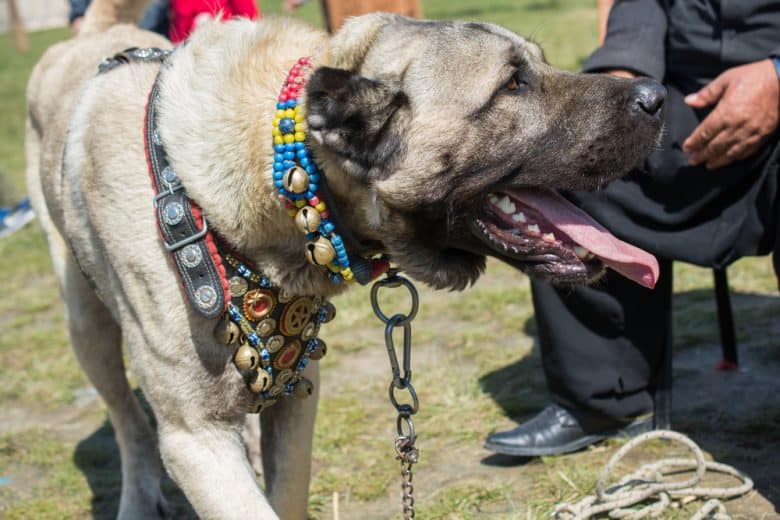
How big does a Kangal get?
We’ve talked about how intimidating they can be because of their size.
Well, to give you a more detailed picture, Kangal dogs can grow up between 27 to 29 inches (69 to 74 cm) in height and weigh an impressive 80 to 150 lbs (36 to 68 kg)!
Female Kangals tend to be smaller than their male counterparts. But still, they’re positively huge!
Despite their size, though, Kangals tend to be more agile and athletic compared to other giant breeds.
Is that a Kangal or an Anatolian Shepherd?
Many have been talking about these two as a single breed. After all, they’re both Turkish dogs that guard and herd flocks.
However, these are two separate breeds that may have similarities but have plenty of differences, too. Here’s how you can distinguish this unique canine from an Anatolian Shepherd:
Their coats vary
As we said earlier, true Kangals come in only one coat color. Anatolian Shepherds can come in lighter colors with some splotches and spots. Some Anatolians won’t even have a black mask.
They have different jobs
Kangals guard and protect the herd. They will attack when they sense danger even without orders from their owner.
On the other hand, Anatolian Shepherds work by being a watchdog and are more used to scouting danger rather than attacking intruders.
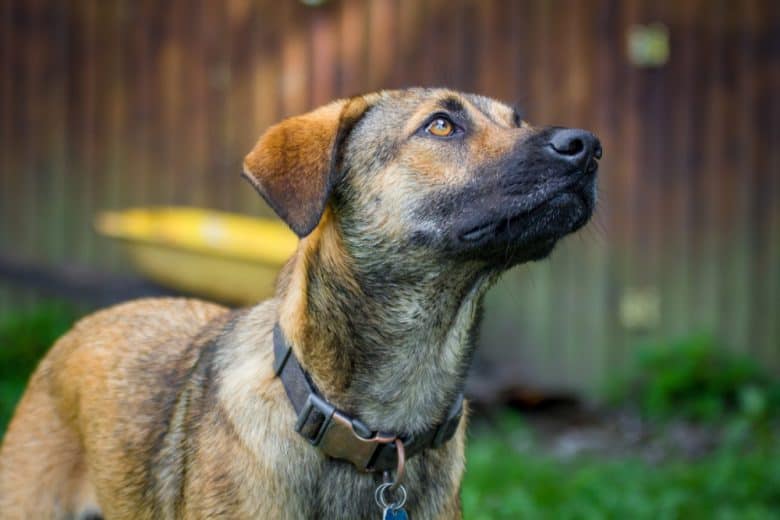
A tough and fearless breed
With its huge size and muscular build, how strong do you think Kangals can be? They’ve proven to be tough dogs who are instinctively protective.
But did you know that this breed has the strongest bite force of any dog? The average Kangal dog has a bite force of 743 pounds per square inch (PSI).
Now, let’s compare that to some of the most famous predators known in the wild:
Kangal vs. Wolf
Known to be the horror of many livestock farmers in Turkey, wolves have become this breed’s ultimate enemy.
Wolves have an average bite force of 400 psi while the largest of them can have a high 1200 psi. Now you can imagine how the Kangal’s bite force (743 psi) can match that of the wolves.
Many farmers and shepherds have their dogs wearing spiked collars as a way to protect them from a wolf’s bite.
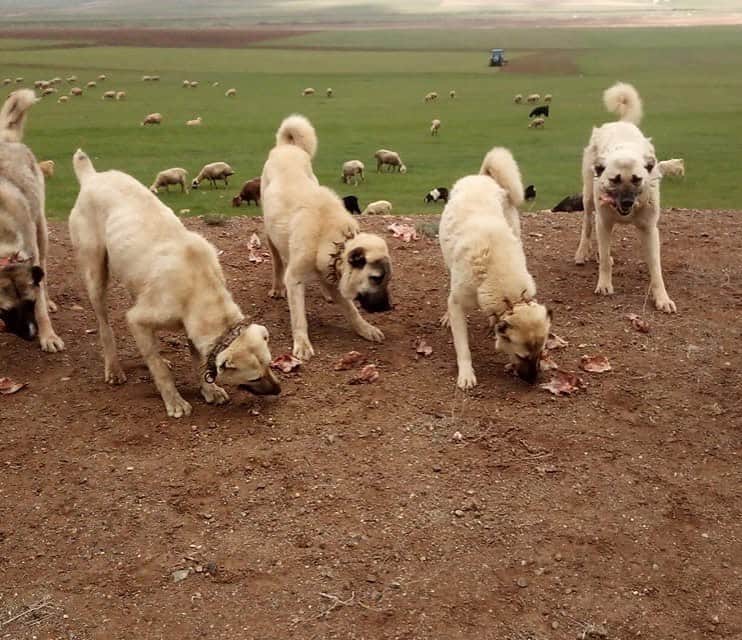
Kangal vs. Cheetah
The real cat-and-dog battle of the wild! Who do you think will win?
The cheetah has a bite force of 475 PSI, so these big cats are no match for a domesticated Kangal dog!
But did you know that these dogs helped with the drive to conserve Cheetahs in Africa? In Namibia, South Africa, the Cheetah Conservation Fund gave livestock farmers 500 Kangal dogs to train.
This caused farmers to stop hunting and killing cheetahs that destroy their livestock – they simply let these dogs do their job.
This just proves that this breed, even with their physical power, knows how to attack or kill only if necessary.
Kangal vs. Lion
Do you really think this mighty dog is a match for the King of the Jungle? Well, let’s not underestimate this wild cat.
Lions may have a lower bite force of 650 psi, but, unlike Kangals, these felines are hunters. The Shepherd dogs may have been trained to protect flocks from wild beasts, but we don’t know if these beasts included lions.
What’s interesting, though, is that the Kangal used to be referred to as the ‘Anatolian Lion’.
Are Kangal dogs really dangerous?
Kangal dogs can be dangerous, and that’s what makes them so good at their jobs. When they’re off-duty, though, you’ll find that they have a gentle temperament and a predictable personality.
Rather than their potential danger, here are some positive traits that you should focus on in this Turkish shepherd dog.
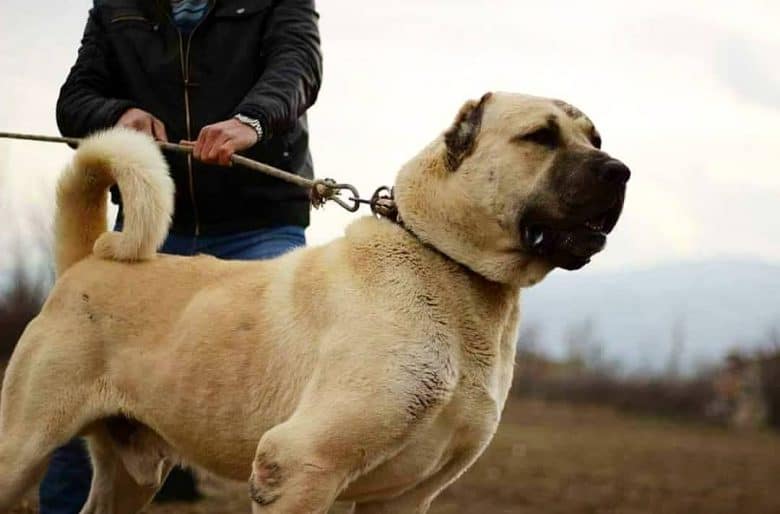
Is Kangal a loyal and protective dog?
The Kangal is loyal and devoted to its master, and it will obey any order it’s given. This is why the breed is the best at what it does.
And as much as they are loyal to their humans, they also protect what’s important to them. They will protect a farmer’s livestock because it’s important to their owner. As such, they will also keep watch over their territory and may attack any intruders.
Are Kangal calm and controlled dogs?
When properly trained, Kangals are able to control their urge to attack what they consider predators. This is a remarkable trait, especially for a dog with such powerful abilities.
These Turkish shepherd dogs are smart enough to know when to calm down, threaten an enemy, or attack a predator.
Are Kangal independent dogs?
Even as young as 2 years old, Kangal dogs tend to develop a sense of independence. They will start to think on their own without the help of their owner.
This is why it’s crucial to establish your role as the pack’s alpha while the Kangal is young. It’s the best way to ensure that your dog will continue to follow your commands as it grows and will discourage undesirable behavior.
Are Kangal active and athletic dogs?
You will rarely see this dog lying around the house. A Kangal is active and agile, ready to jump at any surprise attack.
They’re alert, too, with their eyes and ears always open for signs of danger.
Debunking Myths about the Kangal Dog
Just like Pitbulls, Rottweilers, and other dogs that have a dangerous reputation, there are a lot of misconceptions about the Kangal shepherd.
Let’s debunk some of these myths and get to know the true nature of this dog.
Myth #1: Kangals are born killers.
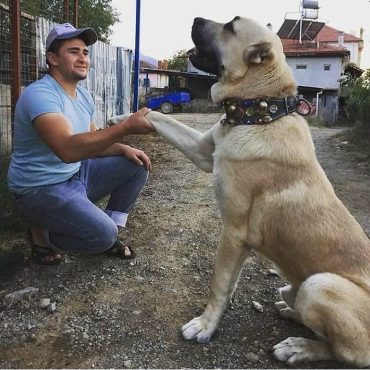
Despite their power, Kangals won’t kill unprovoked.
Their rich history as shepherd dogs gave them abilities to not only guard but also protect the flock, even if that means killing the predator.
Many have seen this skill as useful for illegal sporting activities such as dogfighting.
This may be the reason why there are reported cases of these dogs behaving savagely even around humans.
The way a dog behaves is often a reflection of the environment they were brought up in – and Kangals are no exception.
These are smart dogs that can adapt to their environment pretty well. If they grow up being treated properly and kindly, they will most likely behave the same way.
Myth #2: Kangal dogs shouldn’t be around children.
This is a myth that we should all bury. Despite their size, Kangal dogs are naturally gentle when it comes to kids!
They are protective of their pack, and their instinct will tell them to not be aggressive around humans they consider part of their family.
These giants won’t pose a threat to your babies, as they tend to be affectionate and calm around the humans they trust. They’re strong, so they won’t mind having kids tug on their ears or climb all over their bodies.
They will keep little ones safe to the full extent of their abilities, so there are few companions better for kids than this breed.
Myth #3: Anyone can own Kangals.
Yes, Kangals are a gentle breed, but they have some special needs. One of these needs is a fenced backyard with plenty of space to run and explore. A fence will help keep your dog contained and safe on your property.
A Kangal will also need an owner who can give them the regular exercise they need. Making them just stay at home all day will result in boredom and anxiety, which leads to destructive tendencies and excessive barking.
These dogs may also thrive better with owners who have experience in raising large dogs, if only because such owners will know how to handle their size.
What to Expect in Raising a Kangal
A dog this big and active would definitely need some extra attention, especially in terms of its diet, exercise routine, and training sessions.
But how do you take care of a Kangal dog?
There’s no need for regular grooming for Kangals.
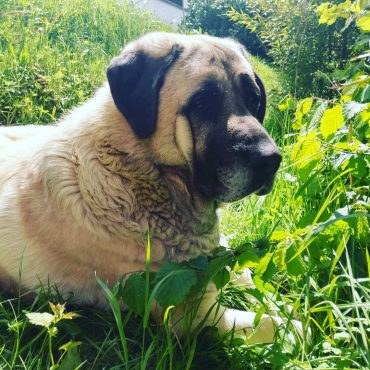
Kangals don’t actually need much grooming. Their thick and short double coat will shed moderately but heavily twice a year, during spring and winter.
At the start of these two seasons, daily brushing should be done using a metal comb and de-shedding tools.
Outside spring and winter, you can brush its coat just twice a week.
They won’t need frequent baths; a bath once a month will usually be enough to keep this dog clean. Bathing your Kangal too often may strip its coat of natural oils and cause skin conditions.
These dogs are known for their tendency to drool, so you’ll need to keep a close watch on its dental hygiene. Brush his teeth at least twice a week to keep them clean and pearly-white.
Kangals need high-quality food.
Speaking of nutrition, let’s talk about one of this breed’s biggest needs – food. Kangal dogs require high-quality kibble in their daily diet. This dog can also have raw foods like meat and eggs, but it’s always best to consult your vet first.
Give a fully grown Kangal adult 4 to 7 cups of premium kibble daily. This amount will be enough to support their daily caloric needs.
A growing Kangal puppy needs 3,000 to 4,800 calories per day. As they grow older, give them a little less, about 2,100 to 3,500 daily calories every day for adults.
Your dog’s meals should include enough protein to strengthen their bones and joints, along with a moderate amount of carbohydrates to keep their energy levels up.
Kangals need a considerable amount of space.
As we mentioned earlier, a Kangal requires plenty of wide-open space to run around. A house with a big backyard will be the best environment for them.
Just make sure to use a wireless fence to ensure that your dog can’t jump over or dig under the fence to explore around your property.
Kangals will love having space to move around, especially since they tend to be territorial. And given this dog’s size, you may have difficulties getting a landlord to let it stay in your apartment.
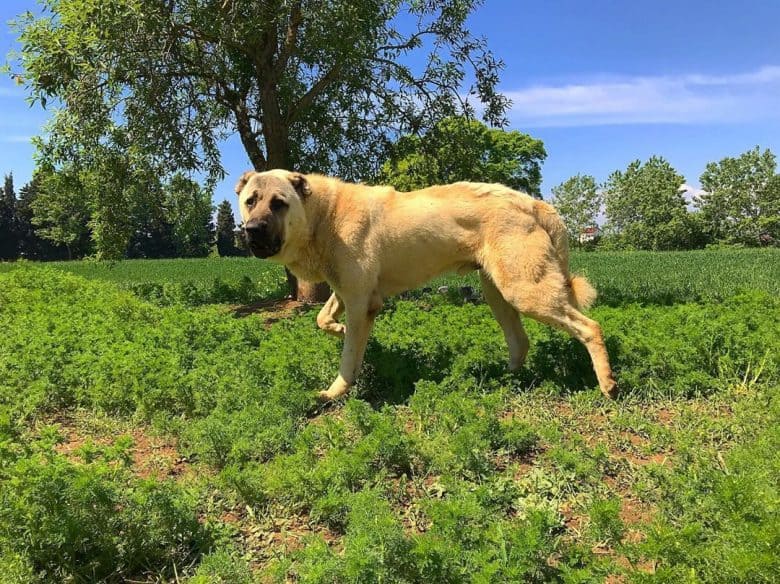
Kangal dogs have their own working style.
If they were tasked to work on a farm, Kangal dogs will be more effective as team players. The best team is composed of two neutered males and one female.
These dogs can get aggressive when faced with a predator or intruder. This three-phase approach is what happens when a wild animal decides to go after its flock:
Phase 1- Bark
Once he senses danger, a Kangal dog warns its enemy that he is present in the area. They do this to intimidate the would-be attacker.
Phase 2 – Roar
Now if the enemy won’t budge or is not at all intimidated, they move into this phase of the approach. Roaring, like other animals in the wild, would mean the fight is on if the enemy persists.
Phase 3 – Attack
If the predator continues to approach, this breed would protect the flock by attacking or going on the defensive. They’d never let anything – or anyone – intrude upon their territory.
Are Kangals healthy dogs?
Apart from being some of the strongest dogs, Kangals are one of the healthiest breeds, too. These canines have just a few known health issues:
Hip Dysplasia
Common in large to giant breeds, hip dysplasia ranks first in a Kangal dog’s health issues to watch out for. This is a congenital disease wherein hip bones don’t develop properly, causing future arthritis concerns.
Lipoma
Tiny lumps and tumors may sometimes grow in their abdomen and chest. These tumors, though benign, may cause discomfort and keep them from enjoying their daily activities.
Take your dog to the vet if you feel any weird lumps in his chest or belly when you’re grooming him.
Entropion
Another hereditary disease, this is a condition where a deformity in the eyelids make them fold inwards. Once the eyelids are folded in, eyelashes and hair would rub against the eye area, causing irritation and discomfort.
These health conditions can be easily dealt with through regular vet visits and early diagnosis and treatment.
You’ll enjoy having these loyal companions and protective guard dogs at your side for a long time, as the Kangal has an average lifespan of 11 to 13 years.
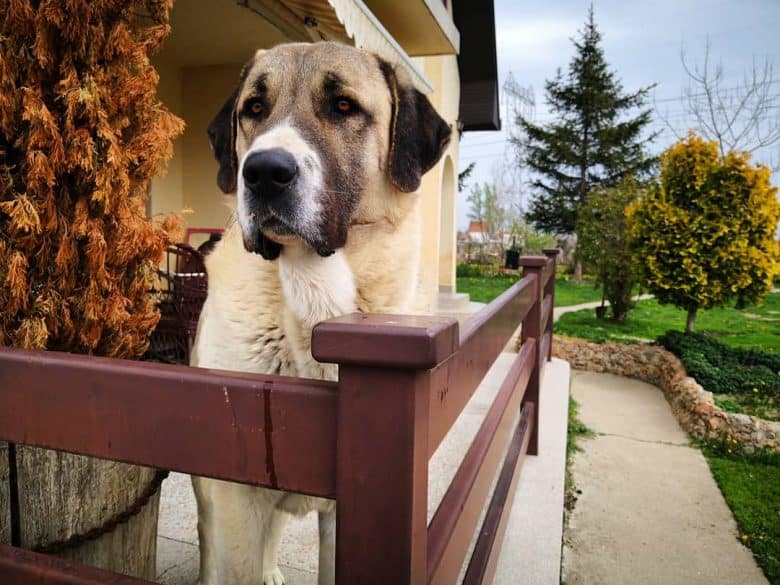
How to Train a Kangal Dog?
You know what they say, “With great power, comes big responsibility.”
Kangals are a strong and powerful breed and what these dogs need is a responsible owner who will know how to put their capabilities to good use.
Whether you want to train your Kangal to protect your livestock or you just want to teach your dog proper behavior, you will need to train them young.
Even when they’re only puppies, familiarize them with all sorts of sights, sounds, and smells to desensitize them and help them stay calm in unfamiliar situations.
Never train a gentle Kangal puppy to be unfriendly towards humans, even strangers. As they age, their level of protectiveness will increase. This is where they develop independence and start to act by instinct.
They should always be rewarded when they show signs of calmness and being even-tempered, while signs of aggression must be discouraged through proper training.
Don’t be worried that training them to be friendly with strangers will affect their guarding abilities. If properly socialized with people, these dogs will only bark or roar in the presence of intruders or unfriendly strangers.
Getting Your First Kangal Puppy
Think you’re ready to get one of these big boys? Remember, as gentle and calm as they are, Kangal dogs are not for everyone.
This handy checklist will help you determine if you’re really prepared for such a powerful dog.
Are you the right owner for a Kangal dog breed?
Getting a dog of this size is a big decision, no pun intended. A strong breed like the Kangal will thrive with an owner that can meet these criteria:
- I have owned big dogs before.
- I have a wide-open backyard or enough space for a moderate-energy dog to move freely.
- Vigorous exercise is part of my daily routine.
- I have the time and patience to train a dog.
- I understand and am ready for this dog’s behavior and temperament.
- I do not intend to train dogs for any illegal sports or activities.
- I live in a city where Kangal dogs are legally permitted.
If you meet all these, then you may be ready for your very own Kangal dog.
Finding trustworthy Kangal breeders
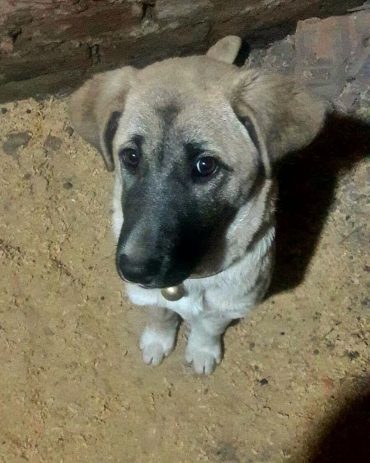
The Kangal Dog Club of America (KDCA) takes care of ensuring that these amazing dogs are ethically bred.
The club has come up with a Breeders Code of Ethics to establish the proper breeding and purchase of these canines.
Breeders have differentiated true Kangals from crossbreeds by observing certain disqualifications in the dog’s physical features and temperament.
High regard for purebred Kangals is important for the conservation of the breed’s quality.
Turkey has also banned the export of Kangals to preserve the breed’s pedigree. That’s why these dogs are rare in the US.
The rareness of the breed also drives up its prices; a single Kangal pup may cost anywhere from $800 to $5,000.
Though these dogs are legal in the US, note that laws may differ from state to state. If you’re interested in owning this breed, make sure to find out about any breed-specific laws in your area.
Also, it is important to know that the Kangal you’re intending to purchase has been registered at the United Kennel Club or at least has parents that are properly registered.
The UKC is the only legitimate registration for Kangal dogs if you’re living in Canada and the US.
To help you find healthy, well-bred dogs, we’ve listed these trustworthy Kangal breeders:
Evan Mills Cattle Company – Initially a farm that only bred cattle and sheep, this Kentucky-based company started breeding these canines to deal with vultures and coyotes encroaching on their property. They’re primarily interested in placing Kangals in working environments, so you’ll have to fill out an application to purchase a dog from them.
Kangal Dog Town – Based in Massachusetts, this breeder produces top-quality Kangal dogs for the love of the breed. This owner is committed to preserving Turkey’s National Treasure and has traveled around Europe and Turkey to learn more about these dogs.
Sivas Regal Kangal Dogs – Located in North Carolina, these breeders highly value Turkey’s indigenous Kangals. They have traveled across Turkey to consult village breeders and experts in producing these fine dogs.
Read our article here to learn more about Kangal Dog Price!
Rescue and adoption for Kangal dogs
If you want to have a Kangal dog but don’t have the budget for getting a pup from a breeder, adoption is your next best option.
Give a Kangal shepherd a new home through these organizations:
Kangal Dog Club of America (KDCA) – They are a group of volunteers who works with protecting Kangal dogs in need.
National Anatolian Shepherd Rescue Network (NASRN) – This is a foster home that gives temporary shelter for unwanted and abused Kangals and Anatolian crosses. They also offer expert advice and have a support team to help you take care of your newly-adopted dog.
The final word on this mighty breed
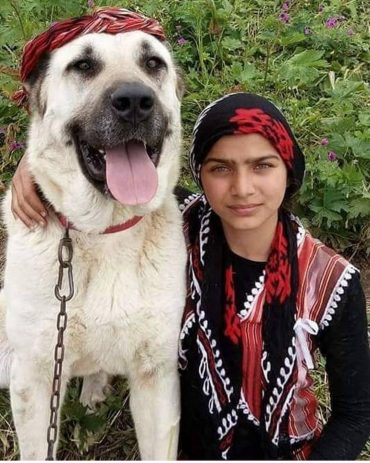
The Turkish Kangal, though it has sparked controversy, is one of the most loyal and protective dogs anyone can have.
Its strength has been compared to wild beasts, but this dog has a calm temperament and he knows when he needs to attack to protect his flock and property.
These canines are gentle guardians around kids and the people they consider part of their pack.
However, these dogs have specific needs that owners must be aware of.
They need plenty of vigorous exercise every day, and they’ll need lots of space to move around. Their skills must be put to good use so they’ll maintain their protective instincts.
The Kangal is definitely not your ordinary big dog, but you’ll love having this devoted breed around.
Now, what’s your verdict on this unique canine? Share it with us in the comments!
Cess is the Head of Content Writing at K9 Web and a passionate dog care expert with over 5 years of experience in the Pet Industry. With a background in animal science, dog training, and behavior consulting, her hands-on experience and extensive knowledge make her a trusted source for dog owners.
When not writing or leading the K9 Web content team, Cess can be found volunteering at local shelters and participating in dog-related events.
